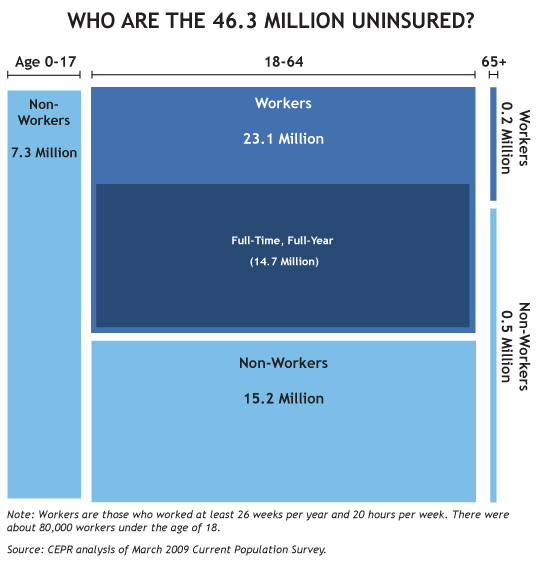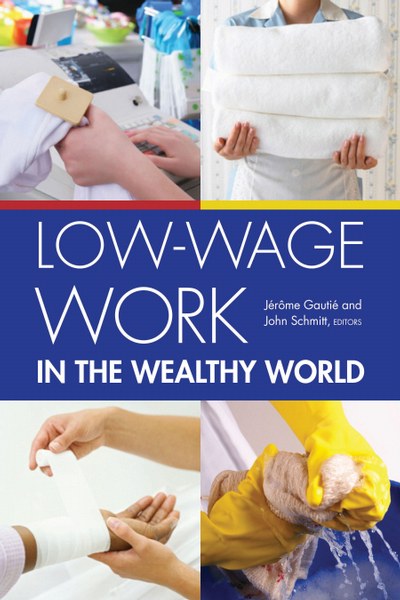Archive: April 2010
Working and Uninsured
April 21, 2010

Almost every one of us over at CEPR had some role in creating the above graph on uninsured Americans in 2008.
From the caption on the CEPR site: "The most recent available data (2008) show that 46.3 million people in the United States had no health insurance. Adults between 18 and 64 are by far the largest group of uninsured (38.3 million in 2008). Children are the next largest group of the uninsured (7.3 million). Thanks primarily to Medicare, only a small share of the uninsured are 65 or older (0.6 million). Most uninsured adults are workers. Over 23 million workers 18 to 64 have no health insurance from any source, compared to about 15 million non-working adults in the same age range. A large majority of the working adults (14.7 million) are 'full-time, full-year' (that is, worked at least 50 weeks in the year, for at least 35 hours per week)."
Low-Wage Work in the Wealthy World
April 20, 2010

Today is the official release date for Low-Wage Work in the Wealthy World, the book I co-edited with French economist Jerome Gautie.
The book summarizes the results of a multi-year study sponsored by the Russell Sage Foundation of low-wage work in Denmark, France, Germany, the Netherlands, and the United Kingdom, with links back to an earlier related project on Low-Wage America.
The first section of the book provides a cross-cutting overview of labor-market institutions in each of the five countries. The second section reviews the findings of case studies of low-wage occupations in five industries --hotels, hospitals, call centers, food processing, and retail.
The full list of contributors: Eileen Appelbaum, Rosemary Batt, Peter Berg, Annette Bernhardt, Gerhard Bosch, Fracoise Carre, Laura Dresser, Jacob Eskilden, Damian Grimshaw, Klaus G. Grunert, Karen Jaehrling, Susan James, Caroline Lloyd, Geoff Mason, Ken Mayhew, Philippe Mehaut, Philip Moss, Wiemer Salverda, Chris Tilly, Marc van der Meer, Maarten Van Klaveren, Achim Vanselow, Dorothea Voss-Dahm, Chris Warhurst, Claudia Weinkopf, and Niels Westergaard-Nielsen.
UPDATE 05/08/2010: Business Week Economics Editor Peter Coy cites the book and quotes contributor Eileen Appelbaum and me in a story on immigration reform.